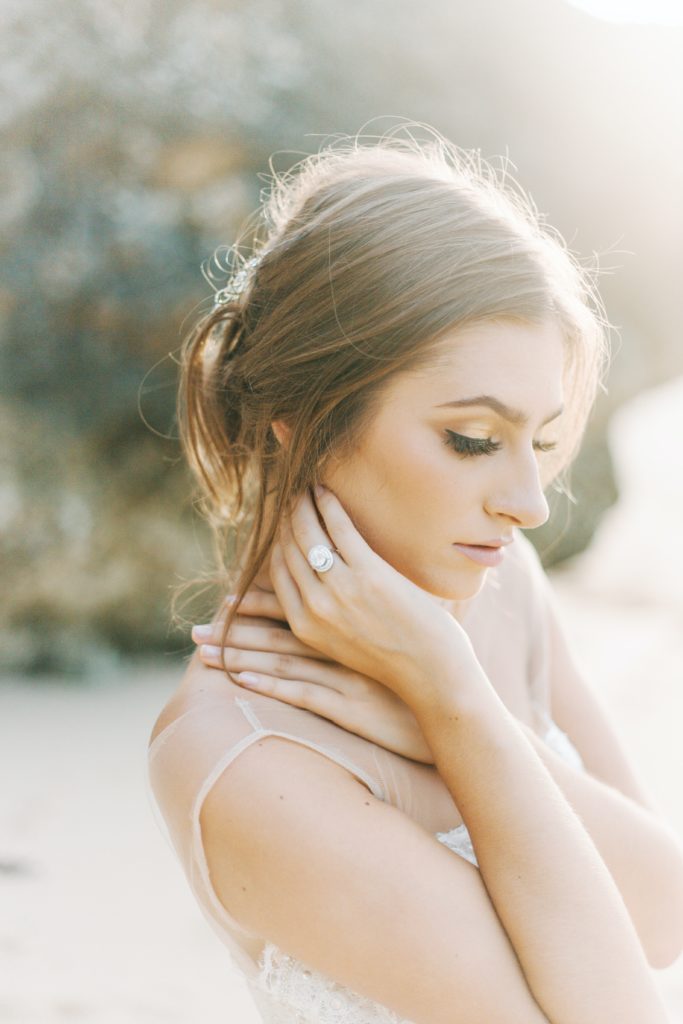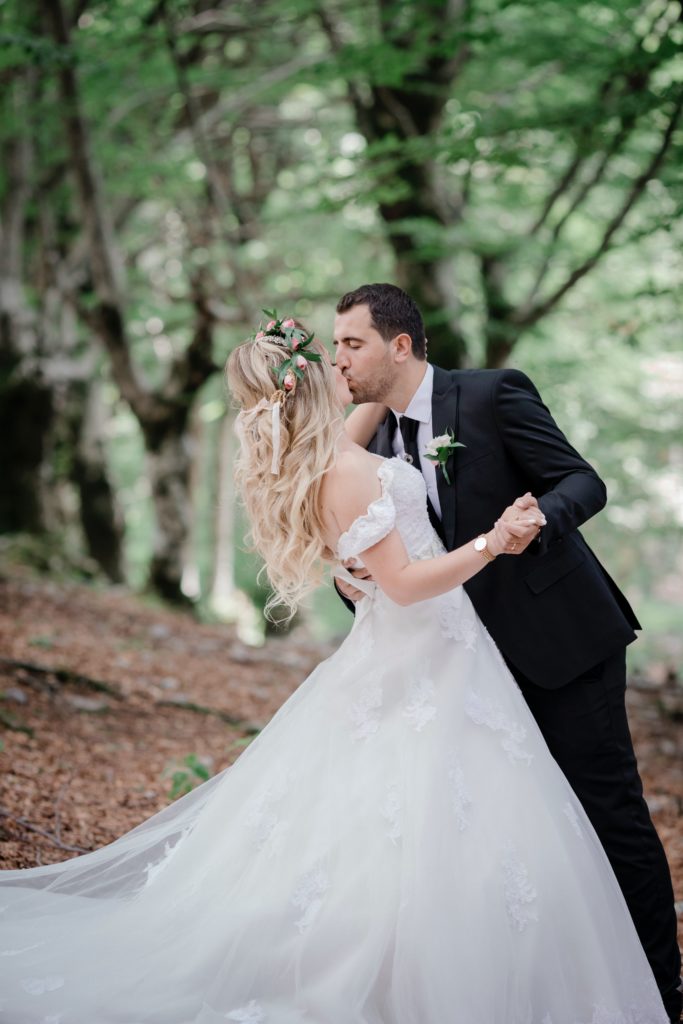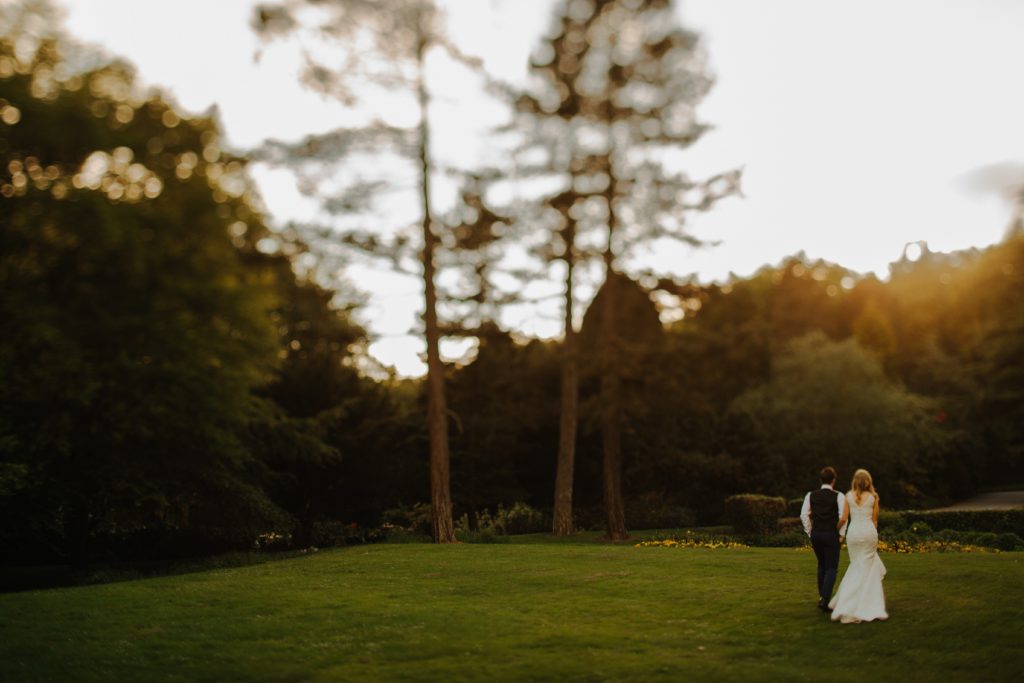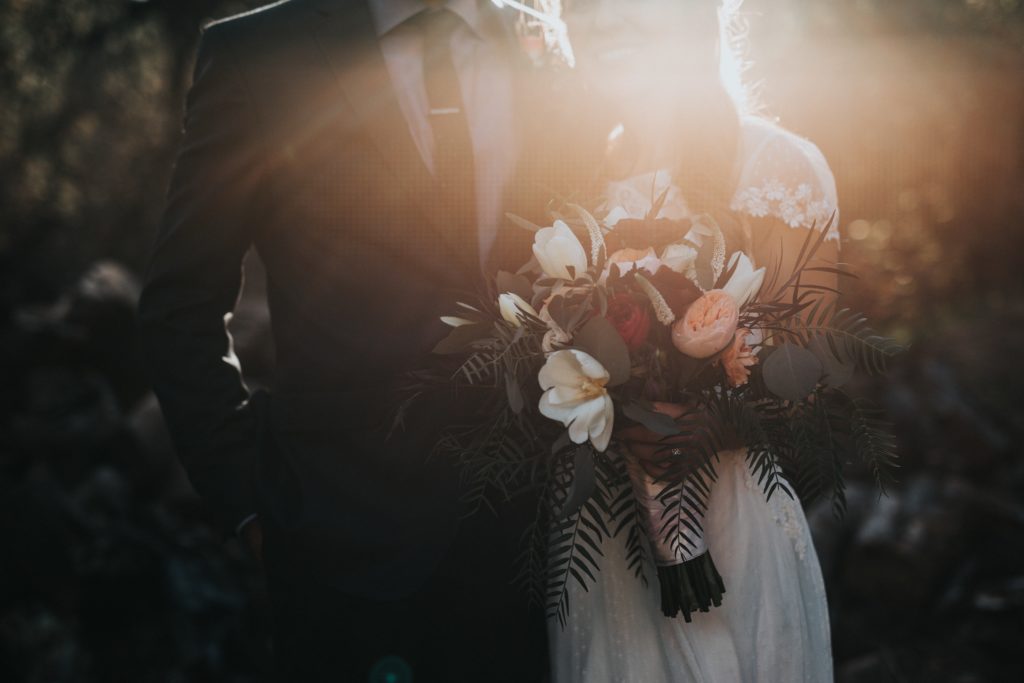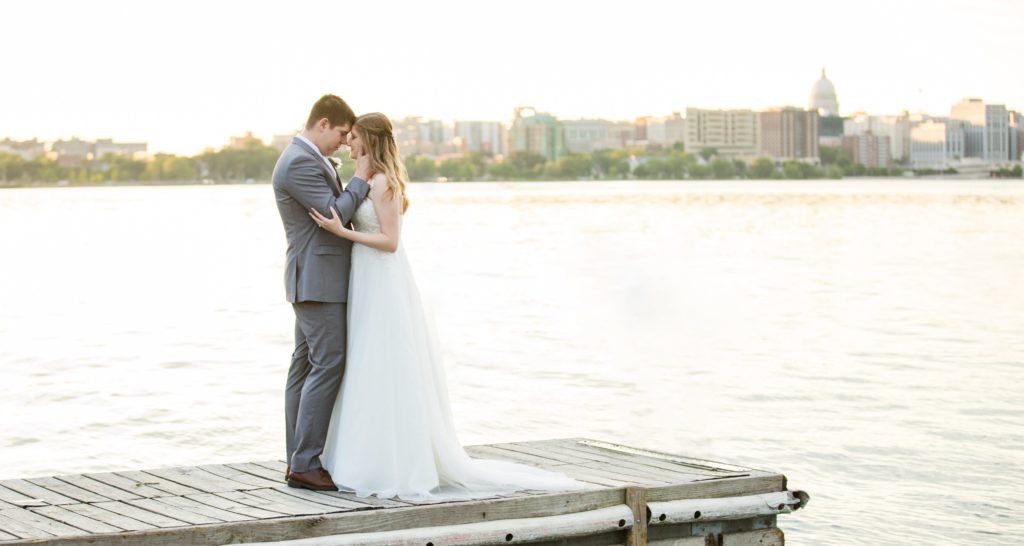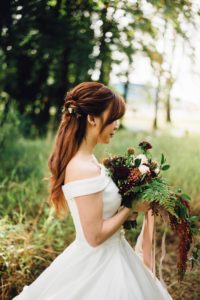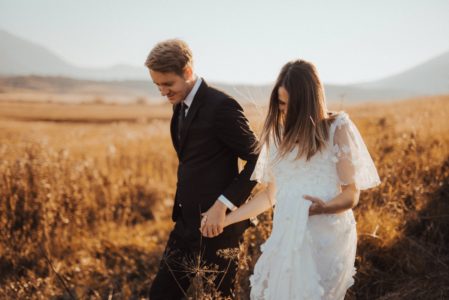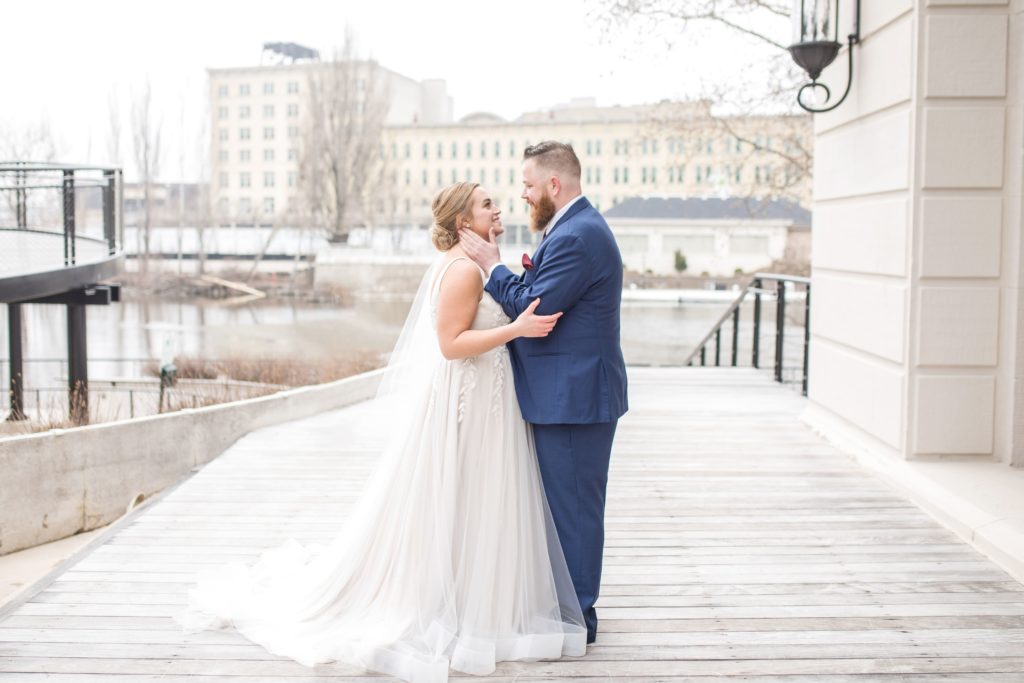
Selecting the best Milwaukee wedding photographer for you can be very daunting. Your wedding photos are often your most treasured keepsake after your wedding day, and I know it can be stressful to make sure you have found the perfect person (or team) to capture your memories.
When you start your search, you will quickly realize that you have so many options! So how do you pick? Typically, most brides narrow down their search by location. For instance, if you are a Milwaukee native, you will probably search for a “Milwaukee wedding photographer” or for a photographer who serves that area. But beyond that, you still have hundreds of potential sites to look through in one area alone.
To help, I decided to put together a list of 5 considerations that you and your fiancée should think through before selecting the perfect wedding photographer for you.
1. Identify Your Style
Wedding photographers shoot and edit in many different styles. The first step is to identify the style that resonates with you. This is easier to do when you understand what you’re looking at, so this is where I come in.
Shooting Styles: Most photography styles can be categorized into Fine Art, Editorial, Photojournalistic, and Traditional.
Fine Art: This style gets thrown around on bios quite a bit, and you probably have no clue what it means! A loose interpretation is fine art wedding photographers actively “create art” while capturing the story of your wedding day. Fine art photographers want to turn every photograph into a stand-alone piece that could be placed on a wall. Many fine art photographers are hybrid shooters and shoot with both digital and film cameras.
Editorial: If you love the look of photography in magazines like Vogue and Harper’s Bazaar, then you might want to find a photographer that shoots editorial style portraits. Editorial photographs are creative, posed, edgy and dramatic, instead of a candid and relaxed feel.
Photojournalism: Photojournalistic is another buzzword photographers use to describe their work. These types of photographers capture the wedding day as a whole, not just planned moments. If you do not like tons of posing or staging, then a photojournalist wedding photographer might be the best option for you. Photojournalist photographers are best known for capturing raw and real moments.
Traditional: A traditional photographer is very into classic, posed shots and will also focus on capturing the details that are important to you. I am not saying traditional photographers do not capture candid moments as well, but they first look to artistically capture traditional wedding shots.
Editing Styles: Typical editing styles are – Light & Airy, Moody & Dark, True to Color, and Warm & Bright.
**Besides True to Color, all example images below are not my own! These photos were found on free to use stock photo websites.**
Light & Airy: This is a very popular style. Light & Airy images are bright, typically overexposed at least ½ stop, and have “airy backgrounds” (open areas, limited thick greenery, and no dark colored buildings in the background). Light and airy editing focuses on soft, natural light to accentuate portraits. The colors are often muted, especially green tones. Many photographers who edit in the Light & Airy style feel the color tones are similar to the look of old film.
Moody & Dark: Moody & Dark images are rich and dramatic, and can have a cinematic feel to them. There is typically more saturation added to the image, and vibrant tones are muted towards grays, blacks, and browns. In other words, your bright pink bouquet will not be so bright anymore. I personally think this style is beautiful – especially in indoor artificial light or at golden hour (just before the sun is setting). However, it can be hard to make every single wedding day image look realistic with a dark and moody look. My preference may be completely different than yours though! This could be the perfect style for you, if you are looking for an artistic perspective of your wedding day.
True to Color: True to color images are just what they sound like – true to what the eye would see in real life. Most true to life editors adjust the white balance, boost the vibrance, contrast, and white tones, and bring down the highlights some.
Warm Toned: This trend is even newer than dark & moody! This style makes every photo look “golden” regardless of the time of day shot. Typically the orange and red tones are increased, and highlights are brought down. I think we can go further to categorize these photographers into “warm & bright” and “warm and moody.” Bright stylized photographers keep the warm tones but increase the vibrance. Moody photographers crush the blacks and edit with browner tones.
Hopefully these description and image samples help you narrow down styles. Now here is where it gets a little tricky – most photographers do not utilize just one style. For example, I approach wedding days with a photojournalistic mindset, but also utilize traditional and “candid” poses. My editing style is closest to “True to Color” but I make sure my images are “Warm Toned” when possible, and prefer lighter, clean backgrounds similar to the “Light & Airy” photographers.
2. Personality
Once you choose the perfect style for you, narrow down your selection based on personality. When you have a genuine connection with your photographer, they’ll do a better job capturing your emotions, love, and joy on your wedding day. Browse websites to find bios and wedding pages that connect with you. I also think it’s very helpful to set up a phone call or video chat before booking. I believe talking in real time gives couples a much better idea of who I am, and vice versa. You can also choose to use an engagement photo session as a trial run. An initial shoot with your potential wedding photographer lets you meet each other in person, gauge chemistry, and see how their style applies to you!
3. Pricing & Image Turnaround Time
After you have selected your preferred photography style and found a few photographers you think you might jive with, the next obvious step is to narrow down based on price and offerings. If packages are similar you may consider picking the most affordable wedding photographer or “best value package”. Here is why you need to think beyond just packages:
- I find that large, popular wedding sites are way off about their budget recommendations for the average photography cost. This may impact your decision of what you believe is a “normal price” for a photographer.
- Photographers’ pricing structures can be different for so many reasons – experience, equipment costs, cost of doing business, etc. Please pay attention to the quality more than the cost.
- One of the most common mistakes brides make when choosing a photographer is paying too much attention to the package product content. If you ask me, it’s so much better to end up with 800-1000 great images from your wedding than subpar images, 3 albums, and $500 of print credit that you probably will not know how to spend.
- Consider image turn around time when factoring in price!! I think this is so, so, important to ask your photographer about. Some photographers charge less money because it takes them 5-6 months to edit your wedding photos. Same goes with studios who advertise they shoot 100 weddings a season. Figure out what your client experience is going to be like! Can your photographer give you individualized and thoughtful attention from inquiry all the way up until your wedding day?
If you’re currently planning your wedding, you know that things add up quickly. As a couple you have to figure out what is costly and unnecessary. Yes, I may be biased since I am a photographer, but I truly believe you will not regret investing in your wedding photographer! That being said, not every budget photographer will take terrible images or provide a subpar experience, but often you get what you pay for (so consider my points above before settling on the cheapest package.)
4. Backup Equipment & Image Processing
You have now narrowed down photographers based on style, personality match, and pricing. Here are a few last tips:
- Backup equipment is crucial! I personally would not hire a wedding photographer that does not have backup equipment. You don’t want your photographer showing up to shoot your day with only one camera body. There is nothing wrong with using a singular body throughout the day, but if your photographer brings only one body that can be an issue. What if the strap breaks and the camera falls to the ground before the ceremony starts. Or what if the camera body is used frequently and the shutter breaks (this does happen!). Having an extra body (and extra lenses for that measure) is important.
- Beyond backup equipment, consider asking your potential photographers how they will store and backup your precious files. For weddings I dual slot record (record the same files onto two cards in case one corrupts). After the wedding is over, I immediately cull the images from the cards and back them up to two hard drives. I also never format my SD/CF cards until the wedding photos have been uploaded to the cloud and/or delivered.
5. Don’t Sign on the Dotted Line Until You Understand…
- If they charge a travel fee and if so, what does that include?
- Most photographers have a radius outside of which they charge a travel fee. Beyond paying for miles, lodging is often required.
- Print release and social media legalities.
- This is different for every photographer. I personally allow my clients to print wherever they would like (though I do encourage ordering through me). This is not the case with every wedding photographer though.
- Thoroughly read the contract!! Refund & cancellation policies, liability release, payment plans, food service requirements and other very important information is found in wedding photography contacts. Please read very carefully before signing.
I hope you found this blog post helpful. If you think of any questions during your wedding photographer search, please reach out. I’d be happy to answer even if you are not inquiring, because I truly believe every bride should be as informed as possible. Happy planning! 🙂
More Wedding Tips:
How Many Hours of Wedding Photography Coverage Do You Need?
